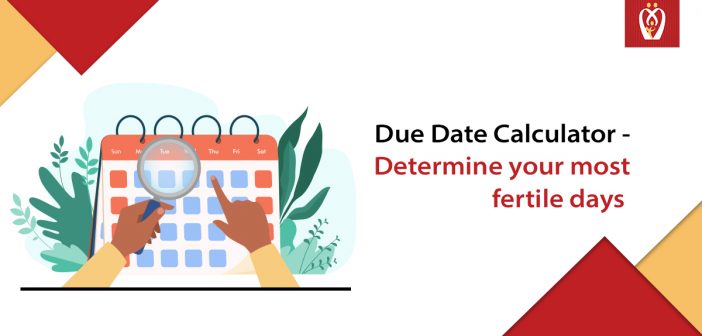Introduction
You find out that you are pregnant and everyone around you is happy. But you wonder what would be your due date and when would your little bundle of joy arrive. This is where the due date calculator comes into play. The due date, also known as the estimated delivery date (EDD), is the predicted start date of labor.
Because this is only an estimate, you’ll most likely start labor anywhere between two weeks before and after your due date. Unfortunately, just 1 in every 20 people gives birth on their anticipated due date, which means that only 5% of babies are born on their exact calculated due date worldwide.
How to calculate your due date?
There are a few possibilities. You may calculate your due date by counting 38 weeks from the day you were born if you know it. (A human pregnancy is about 38 weeks long.) Only a small minority of pregnant mothers, on the other hand, are aware of their exact conception date. This is because, even if you just had intercourse once throughout your fertile period, Unless you were ovulating, you wouldn’t be able to conceive on that day. Sperm can live for up to five days inside your fallopian tubes.
So you can release an egg (ovulate) up to five days after having intercourse, which is fertilized by awaiting sperm. It’s at this point that you discover what you are expecting. So, how can a due date be calculated without knowing the day of conception?
- The most common method for figuring your pregnancy due date is to count 40 weeks from the beginning day of your last menstrual cycle (LMP). The bulk of healthcare professionals approaches it in this manner. If your menstrual cycle is the average length (28 days), it began two weeks before you became pregnant. This explains why pregnancies are reported to last 40 weeks instead of 38 weeks. This process is unaffected by the length of your menstrual cycle or the period during which you suspect you may have conceived. On average, women ovulate two weeks after the start of their menstrual cycle. Women are also more likely to recall the start of their last period than the ovulation day.
- If you know exactly when you conceived — for example, if you used an ovulation predictor kit or kept track of your ovulation symptoms — you can calculate your pregnancy due date. Choose the proper calculating method and enter your date. You don’t always conceive on the same day you have intercourse.
- If you conceived through IVF, you could use your IVF transfer date to calculate your due date. If you had a Day 5 embryo transfer, count 261 days from the day of the transfer. If you had a Day 3 embryo transfer, count 263 days.
Is it possible that your due date can change?
If your baby is determined to be substantially bigger or smaller than expected for gestational age during a first-trimester ultrasound check, your healthcare professional may change your due date. This is more likely to occur if your menstrual cycle is erratic, making it difficult to determine the day of conception. During the ultrasound test, your healthcare practitioner will measure your baby to determine how far along she is and then give you a new due date.
What if I am sure about my due date?
You can use the due date calculator to see your pregnancy calendar if you already know your due date. It will tell you when you’ll reach certain milestones, such as when your baby’s heart begins to beat and when prenatal tests and treatment are needed. You’ll also learn about your baby’s zodiac sign and birthstone, as well as renowned people who were born on your due date.
What is the probability of giving birth on my due date?
Of course, a due date calculation, whether from our tool or your doctor or midwife, is always an estimate. Only one out of every twenty mothers gives birth on time. You’re just as likely to go into labor any day in the two weeks leading up to the due date as you are in the two weeks following the due date.
Baby bump due to date calculator
You will be able to have a better sense of when to anticipate your baby once you’ve calculated your due date – and start making plans appropriately. One of the first things you should do if you haven’t already is to make an appointment with your doctor, who can confirm your pregnancy with a blood test and a physical exam and assist you in determining a more accurate due date.
You’ll be inspected at each subsequent prenatal care session to evaluate the size of your uterus and to track your baby’s development. These appointments will include exciting pregnancy milestones like hearing your baby’s first heartbeat and seeing your baby through ultrasound. Your pregnant due date may be altered along the journey, depending on what is discovered. While your GP is the most appropriate person to advise you, there are things you can do right away if you find out you’re expecting.
How to use the baby bump due to date calculator
To find out how far along you are in your pregnancy, follow these three simple steps:
- Determine whether you conceived on the first day of your last menstruation or on the precise day you conceived.
- In the pregnancy week calculator, enter the required dates.
- Then press Find out now! To see how far you’ve progressed.
Remember that each pregnancy is different; therefore, the outcome will be an estimate rather than a specific date.
Calculating your most fertile days with Nurturey PinkBook
Nurturey was created to support, inform, and encourage parents during their pregnancy and parenthood experiences. You can have online access to your child’s and pregnancy health records at any time. You may arrange appointments and contact your GP through SMS, get reminders about upcoming health events, and get trustworthy parental guidance directly from the NHS, all of which will help you make better decisions.
The NHS due date calculator enables you to find out the time when your baby is arriving. Nurturey’s PinkBook is a digital upgrade of the NHS paper red book as a leading supplier of the Digital Personal Child Health Record (DPCHR) program. It allows you direct access to your child’s medical records and reliable advice from NHS systems. This content has been specially selected for your stage in the parenting process. Nurturey PinkBook intuitive tools help you calculate your due date and enjoy your parenting journey with ease.
Conclusion
Few things compare to the rush and joy of finding out you’re pregnant after taking a pregnancy test and receiving a positive result! Your mind will naturally move to plan once you’ve absorbed the news that you’re going to be a mom, and one of your first queries will undoubtedly be: when is my due date?




